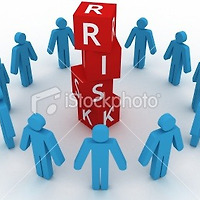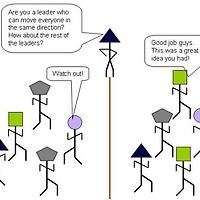
Projects !!
R&D VS New Market
Issue 1
a) While we were discussing about the pre-clinicaldrug case we found that they have some factors making their project difficult.First of all, the development case was running under uncertainty. Because of thebasic research characteristic with ambiguous goal, sometimes they weredepending on luck and intuition. Secondly, drug research project takes longtime to reach a result. The process is not always moving forward. Depending onthe experiment result, sometimes it goes back. Hence, they do not have specificplan and goals in advance. Sometimes a side effect can be the biggest result.Thirdly, it is extremely hard to evaluate and control projects. Each researcherhas their own sub-goals and they are working for their own target, which meansthat the project team members are not totally integrated and the result can beevaluated by different feelings.
b) The biggest difference between the two cases wasthat the Japan case had a tight deadline and specific milestones. But inpre-clinical drug case, they described that “project finishes when the bloodyboat is full” and they were running the project depending on each researcher’sinterest. Secondly, in the Japan case, they are highly interconnected and thisis because they did not have enough time to make mistakes. To meet deadline,they were running with specific goals and milestones. Lindkvist mentioned abouttheir project operating as a “trial-and-error type”. They figured out errorsand fixed to make it work as what they planned. Third, in the Japan case it isdescribed that they had a highly integrated goal and because of that, they needto have an evaluation and feedback frequently. Distinctively from pre-clinicaldrug case, which depends on autonomy, communication was extremely important in theJapan case. They had to manage the knowledge integration and each team membershad to understand each other’s progress. Instead, the education level was notthat critical unlike most of team member of pre-clinical drug case had a PhD.
Issue 2
a) We found that functional features of thepre-clinical drug case were basically inter-disciplinary team. Since they weremore result-focused, not time-limited, the main purpose of cooperating isdifferent. First of all, the drug case had ambiguous goals, which is showingjust a direction to guide the whole process. Also, the case can’t be brokendown into several milestones. Some researchers kept in process until they made aresult. Hence, the result of the development process is hard to predict. Secondly,most of researchers had a PhD degree and the organizational structure of theproject was a matrix, not a hierarchy. They were running a research work basedon individual interests. Thirdly, the project was running as personal knowledgebased pace. Many of researchers focused on their own interesting and it was atime-costing project. It could take more than 10 years to make a result becauseit was difficult to speed up the process.
b) In case of the Japancase, they had a clear goal with many milestones. Because they had a tightdeadline they established the whole plan in advance. Lindkvist mentioned theirprocess as a “fountain” which allows them to finish the project earlier.However they needed to communicate. Moreover they had frequent feedback andevaluate to make sure that they are on the right way. Basically, they were stuckto their goal. Secondly, it was not necessary to have a PhD degree or a love-jobfeeling for the Japan case. Rather it was more important to have acommunication skill and commitment. Thirdly, the Japan case was running ascommon knowledge based pace. Mostly they developed what company asks to do.Inter-communication created shared responsibility and encourages understandingbetween team members to achieve the end goals.
Issue 3
a) In thepre-clinical drug case we think that the motivation creates individually, asJohan mentions. He says that he is motivated because he has a genuin interestin his work, and defines it as ”self-fulfillment”. In this case no goals areexplicitly stated, and the goals of the project become instead the goals of theindividuals. It is mentioned in the case that there is a need for subgoals tocreate a sense of momentum.
In the Japan-case the deadlines areimportant for creating motivation. The project is divided into milestones andsub-goals, these are also important for the motivation of the employees. Thegoals are also very specific and the employees know exactly what is expected ofthem in their work.
b) In the pre-clinical drug case theuncertainty is very high, and you can’t really say what the process will leadto. The process may lead to side-effects, and sometimes this can be a positivething. The process is not in a steady movement, and sometimes the process mightstand still or even be in a stage of regression.
In the Japan case, the process isexplicitly stated and there is no room for errors. Before the process starts alot of testing is done, all this to avoid deviations or errors. It is veryimportant to finish the work within the time frames of the deadlines.
c) In the pre-clinical drug case theprocess could not be ”speeded up” because as stated, you deal with nature. Thework has to take its time, with trial and error testing.
In the Japan case, there is a possibilityto speed up, for example by changing a deadline date. There is no room forerrors, and the deadlines have to be kept.
d) Inthe pre-clinical drug case deviations were unavoidable, and sometimes theycould also be a positive thing, leading to a new discovery. In the Japan casethere was, as previously stated, no room for deviations of standards. Thesub-goals had to be met and process had to be fast moving, to keep deadlines.
Issue 4
When we look at the figure in Lindkvist etal (1998) we can see that the pre-clinical drug case is in the semi-coupling square,and the Japan-case in the scheduling logic square. In a project that issemi-coupled, highly specialized individuals create knowledge cooperatively.This generates much variation and, as stated, ”hopefully innovations”. Thisapplies to the pre-clinical drug case, the individuals working in the projecthave PhDs and the variations from the stated process could sometimes be a goodthing.
In the Japan case we think that it is between the two logics because on one hand it is easy to interpreterrors or deviations because the process is very well defined.
 A4-Pre-clinicaldrugdevelopment.pdf
A4-Pre-clinicaldrugdevelopment.pdf Assignment 4.docx
Assignment 4.docx

